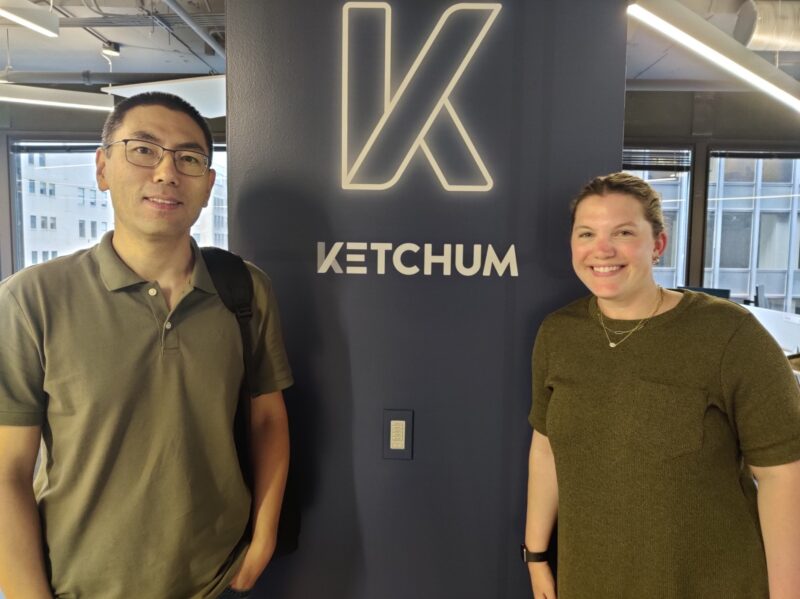The Martin Center for Mentorship in Communication has multiple programs to inspire and develop a future generation of leaders and mentors among today’s outstanding communication students, ranging from the Martin Scholars Program to the Mentor-Protégé Program. The Martin Center also has a Faculty Shadowing Program to foster more robust relationships between those who educate and those who practice in the communications field.
University professors epitomize what it means to be lifelong learners. They constantly study their chosen field and modify their curriculum to reflect our ever-changing world.
To provide another learning channel for communication professors, Beth Goodier, associate professor of communication and director of the Martin Center for Mentorship in Communication, proposed a faculty shadowing program.
“This program allows faculty to shadow practitioners in the field and see how what they are teaching in the classroom is applied on the job,” says Goodier. “Having one professor observe and share current trends and cutting-edge practices can impact up to 300 students a year. It creates a ripple effect of graduates who are better prepared to enter the workforce.”
When Goodier shared her plan with John Cooper and Lynne Eickholt, friends of the Martin Center, they agreed to provide initial funding for the program.
“The faculty shadowing program brings together the essential features of the College— scholarship, teaching and mentoring,” says Cooper.
Because of their significant faculty and executive experience, they appreciated the value of helping both faculty and students connect theory to practice.
“A key faculty role is to advance knowledge within their discipline,” says Eickholt. “To do that they need a real-world test environment.”
One of the first to be accepted when Goodier announced the opportunity was Xi Cui, associate professor of communication. He wanted to see research analytics in action.
Through an introduction from Nicole Moreo, a longtime member of the Department of Communication National Advisory Council, Cui connected with Ketchum, a global public relations firm.
Ketchum research experts Lauren Hasse and Devon Bottomley arranged a series of online meetings and activities to immerse Cui in their daily operations. They also asked Cui about communications from an academic perspective.
Cui’s week-long immersion over spring break in March 2024 quickly extended into a month-long deep dive. He attended more than 20 meetings on everything from media landscape analysis and brand-lift surveys to research support for request-for-proposals.
“To say that this experience was eye-opening would be an understatement; it was transformative,” says Cui. “Seeing the practical application of research methods I teach was exhilarating. From survey design and measurement validity to qualitative coding — every aspect of my course content was in play. One of the highlights of my experience was an influencer-vetting project that incorporated a comprehensive analysis of the media landscape, brand values, candidate influencers’ audience niches and performance metrics. This inspired my rethinking of the real-world relevance of research methods, from conceptualization to data analysis.”
Determined to delve deeper, Cui visited Ketchum’s offices in Chicago and New York over the summer to observe leadership and teamwork dynamics firsthand. He saw how Hasse and Bottomley foster a supportive environment, underscoring the importance of soft skills in research.
Cui also engaged with young analysts who reflected on their college research methods classes, the learning experiences on the job and the new tools and perspectives they had gained. Their stories revealed gaps between academic research and industry practices, highlighting areas where Cui could help bridge those gaps in his classes.
Job shadowing led Cui to refine his teaching approach. He designed assignments that build conceptual depth incrementally to help students connect the dots through smaller, manageable tasks — more like the projects a junior analyst would handle without first seeing the bigger picture.
“I am so grateful to John Cooper and Lynne Eickholt for making the shadowing program possible and to the Ketchum team for sharing without reservation,” says Cui. “I’m excited about the direction of my research class. We’ll be following industry standards while maintaining academic rigor.”
After Cui’s job shadowing, his students will be more workforce ready.


